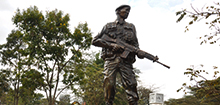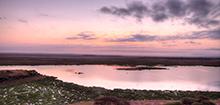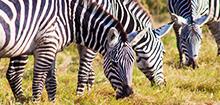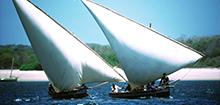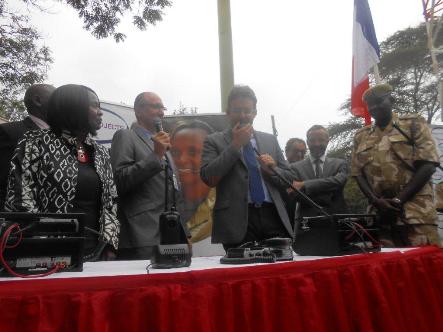
Date Published: 11 Jun, 2015
French Minister of Foreign Trade, Promotion of Tourism and French Nationals abroad, Mr. Matthias Fekl, presided over the switch on and made the first radio call to kick start the new digital radio network.
Kenya’s Minister for Environment, Water and Natural Resources Prof. Judi Wakhungu was also present at the brief ceremony at KWS headquarters in Nairobi.
The minister expressed Kenya government’s gratitude to the French government for extending financial assistance to KWS to fund the project.
“This is a major boost to KWS and to Kenya in general as it will go a long way in aiding the country to achieve one of our targets under the National Elephant Action Plan as agreed with CITES to advance our technology in wildlife monitoring,” Prof. Wakhungu said.
Project background
The Financial Protocol for the project between the government of Kenya and the French government was signed on September 6, 2012. The support is in the form of a French Treasury loan of seven million Euros. The loan shall be repaid in 30 equal consecutive six monthly installments with an interest of 0.73% and a grace period of five years.
Because of funding limitations, the Radio Network will initially cover three of KWS eight Conservation areas namely; Tsavo, Southern and Central Rift. KWS hopes to secure funds in future to extend similar Radio Network in the rest of her conservation areas – Western, Eastern, Mountain, Coast and Northern.
Ellipse Projects of France won the competitive tender and the contract was signed on April 1, 2014.
Current Radio System
KWS operates an analogue, two - way Radio Network, which operates on Very High Frequency (VHF) band. This type of Radio system is used for communication around and within the National Park gates, Patrol teams, between vehicles and other KWS stations.
Communication between KWS Headquarters and the National Parks, anti-poaching units and other far flung stations is achieved by use of High Frequency (HF) radios. These radios are bulky and consume a lot of power
This system suffers from poor speech quality, it has no encryption, the equipment is old and being analogue, the system is limited to transmitting sound/voice only.
New Digital Radio System
The new system, currently under installation is a modern, highly efficient, and will ensure that KWS operates only one type of Radio Network to cover all the Conservation areas eventually. The system is non-proprietary. It is compliant with currently approved international standards for Digital Radio systems. The digital technology applied in the system will ensure high quality sound among users. The system will not only support voice communication but will be able to perform other functions like encryption (to disguise speech), short messaging service (sms), selective calling, private calling, group calling, call alert etc.
The three conservation areas set to be covered by the new system will be linked together by use of Microwave links hence eliminating the use of the HF radio. KWS expects the system to be effective in combating poaching, protecting tourists and in general tremendously improve radio communication within the Service.
The Head of ICT, Michael Odhiambo is the project manager, assisted by Josephat Muindi both from KWS.

